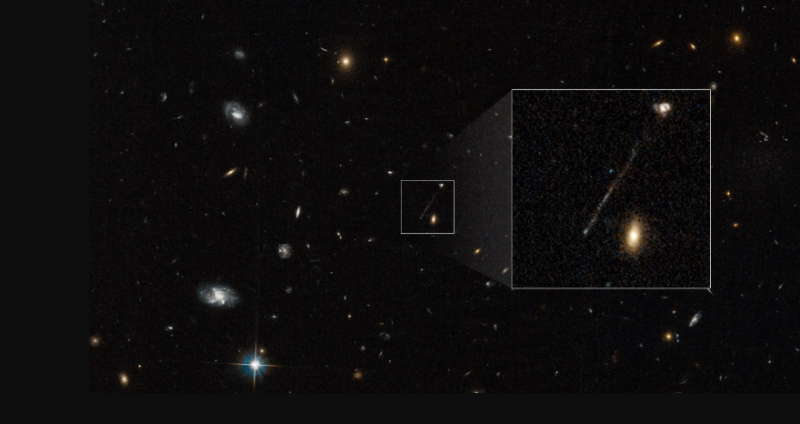
USA: Supermassive black holes have never been observed in the universe before, according to researchers, but NASA's Hubble Space Telescope has managed to capture one.
If the black hole were in our solar system, it could travel from Earth to the Moon in just 14 minutes due to how quickly it is tearing through space. The space object is about 20 million Suns in weight.
Black holes are regarded as some of the strangest celestial objects. Nothing can escape a black hole's powerful gravitational field, not even light. One of the factors contributing to their increased interest among astronomers is their mystique.
Also Read: The ring system of Uranus is captured in exquisite detail by NASA's JWST
Supermassive black holes, including the Milky Way, are thought to be at the centre of nearly all large galaxies.
A never-before-seen contrail of brand-new stars that stretches 200,000 light-years and is roughly twice the size of the Milky Way has been left behind by the supermassive black hole.
Researchers believe that a "game of galactic billiards" between three massive black holes may be the cause of the contrail. According to NASA, the black hole is moving too quickly to stop for a snack.
Also Read: Finally Twitter has started denying access to its free application programming interface
A column of space with the black hole at one end and a path back to its parent galaxy is visible. There is a bright cloud of ionised oxygen at the column's outermost end. The reason for this, according to researchers, is that when a black hole collides with gas, the gas is shocked and heated. It is also possible that radiation from an accretion disc around the black hole is to blame.
When Pieter van Dokkum of Yale University unintentionally discovered the black hole, he was actually searching for globular star clusters in a nearby dwarf galaxy.
Van Dokkum stated, "I thought right away, Oh, a cosmic ray hitting the camera detector and causing a linear imaging artefact."
"It was still present after we removed the cosmic rays. It didn't resemble anything we had previously seen."
The contrail is "quite astonishing, very, very bright, and very unusual," according to Dokkum. The team worked with W. M. Keck Observatories in Hawaii to conduct follow-up investigations. The "aftermath of a black hole flying through a halo of gas surrounding the host galaxy," they came to the conclusion.
The team hypothesises that multiple supermassive black hole collisions could be to blame for the skyrocketing contrail, creating a "chaotic and unstable configuration."
Also Read: The debut of an integrated image generator in a browser is made by Microsoft Edge
In order to escape the host galaxy, one of the black holes "robbed momentum from the other two black holes," according to NASA. The Chandra X-ray Observatory and the James Webb Space Telescope will be used to conduct additional research, the researchers hope.